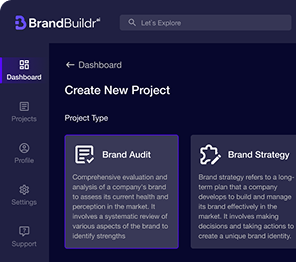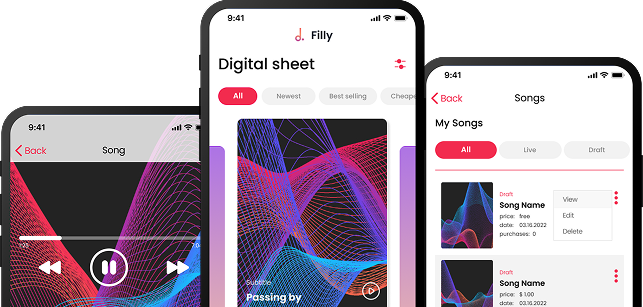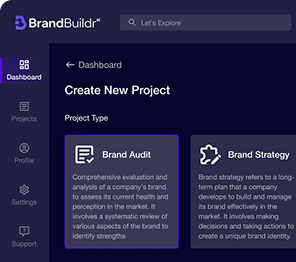In product development, the journey from concept to launch is fraught with risks. One of the most significant challenges is determining whether your idea can actually be implemented from a technical and business perspective. This is where a Proof of Concept (PoC) becomes invaluable. A PoC can either validate the feasibility of your project or reveal critical flaws that might have been overlooked early on.
In this article, we’ll explore why a PoC is crucial to your project’s success, the key steps in creating one, and how to ensure that your PoC effectively proves your concept’s feasibility.
%20(1).avif)
What is a Proof of Concept (PoC)?
A Proof of Concept (PoC) is a small-scale prototype or demonstration designed to test the feasibility of a product idea, technology, or process. It helps teams determine whether the concept can be executed as envisioned before committing to full-scale development. Unlike a Minimum Viable Product (MVP), which is intended to be a functional product released to users, a PoC is often a technical exercise aimed at answering critical questions related to the project’s feasibility.
The primary goals of a PoC include:
- Technical Feasibility: Can the proposed technology or solution be built within the available constraints (time, resources, expertise)?
- Problem-Solution Fit: Does the concept solve the core problem, and can it do so effectively?
- Stakeholder Buy-In: Can the PoC provide enough evidence to secure internal or external funding and support for further development?
By developing a PoC, you can identify potential roadblocks early, saving time and money by addressing technical challenges before moving forward.

Why is a PoC Critical to Project Success?
A PoC is often the first tangible step in turning a concept into reality. Without a PoC, you risk moving forward with a product that may face insurmountable technical challenges or fail to meet market needs. Here’s why a PoC is so important:
1. Validates Technical Feasibility
Many products rely on new, emerging, or untested technologies. A PoC is the perfect opportunity to test whether these technologies can actually deliver the desired functionality. By building a small-scale prototype, teams can determine whether the solution is technically viable and if it can be scaled.
Example: Imagine you’re building an AI-powered voice assistant. A PoC would involve developing the core speech recognition and natural language processing functionalities to ensure that they can handle the required tasks.
2. Identifies Potential Risks Early
By testing key components of the project in the PoC, you can identify technical risks, integration challenges, or performance bottlenecks before they become major issues. A PoC allows you to uncover these risks early and make adjustments before committing to a full-scale build.
Example: If your project involves integrating with third-party APIs, a PoC could test how easily these integrations can be implemented and whether they perform as expected under load.
3. Gains Stakeholder Buy-In
For many projects, securing stakeholder buy-in is critical to moving forward. A PoC can serve as a powerful tool to demonstrate the potential value of the product and convince decision-makers that it’s worth further investment. The PoC shows that the concept is not only viable but also capable of solving the problem at hand.
Example: A startup looking to secure funding from investors might use a PoC to demonstrate the core functionality of their solution, showcasing that it can solve a pressing problem in an innovative way.
4. Saves Time and Money
Without a PoC, teams run the risk of investing significant time and resources into a project only to discover insurmountable technical challenges later. A PoC allows you to test key components before diving into full development, reducing the likelihood of costly setbacks.
Key Steps to Developing an Effective PoC
Building a PoC requires careful planning and execution. While the PoC itself may be a small-scale effort, it needs to be structured in a way that provides meaningful insights. Here are the key steps to developing a PoC that proves feasibility:
1. Clearly Define the Problem
Before you start building a PoC, it’s crucial to define the specific problem or question that the PoC aims to address. This involves identifying the core challenge that your concept is trying to solve. Without a clear problem definition, the PoC may become too broad or unfocused, making it difficult to extract useful insights.
Questions to Ask:
- What is the main technical challenge or unknown in the project?
- What specific functionality or component needs to be tested in the PoC?
- What would success look like for this PoC?
Example: If you’re developing a new fintech app, your PoC might focus on testing whether your chosen encryption algorithm can securely handle large volumes of sensitive financial data.
2. Set Clear Success Criteria
Once you’ve defined the problem, the next step is to establish clear success criteria for the PoC. These criteria will serve as the benchmark for determining whether the PoC has successfully validated the concept. The success criteria should be measurable and directly related to the problem being tested.
Success Criteria Might Include:
- Performance benchmarks (e.g., response times, latency, or throughput).
- Functionality requirements (e.g., successful integration with a third-party API).
- Security requirements (e.g., encryption standards met).
- Usability requirements (e.g., the feature performs as expected under real-world conditions).
Example: For a PoC testing an AI-based recommendation engine, success criteria could include achieving a certain level of accuracy in product recommendations after processing a specified amount of data.
3. Focus on Core Functionality
One of the key principles of a PoC is to keep it simple and focused. The goal is not to build a full-featured product but to test the core functionality that addresses the problem or technical challenge. By focusing only on the most critical aspects of the project, you can reduce development time and effort, allowing you to validate the concept quickly.
Pro Tip: Use a lean approach — strip away any non-essential features and focus solely on proving the concept.
Example: If your PoC is testing the feasibility of a mobile app’s augmented reality feature, focus solely on building the AR component. Leave out other features, like user profiles or notifications, until the AR functionality is validated.
4. Develop and Test the PoC
With the problem definition, success criteria, and scope in place, it’s time to develop the PoC. This may involve creating a prototype, building a small-scale version of the product, or conducting experiments with specific technologies.
During the development process, keep the following in mind:
- Use Agile Methodologies: Iterative development allows you to test early and often, making it easier to adjust the PoC as needed.
- Keep Stakeholders Informed: Regularly update stakeholders on progress and findings. This keeps everyone aligned and ensures that the PoC remains focused on the core problem.
Once the PoC is built, conduct thorough testing to ensure it meets the success criteria. Testing should simulate real-world conditions as much as possible, allowing you to see how the concept performs in practice.
5. Analyze Results and Make Decisions
After testing the PoC, it’s time to analyze the results and determine whether the concept is feasible. Compare the outcomes against the predefined success criteria to assess whether the PoC has validated the core assumptions. If the PoC meets the criteria, it provides a strong case for moving forward with full-scale development. If it doesn’t, the team must decide whether adjustments can be made or if the project needs to be re-evaluated.
Questions to Ask When Analyzing Results:
- Did the PoC meet the success criteria?
- What challenges or limitations were uncovered during testing?
- Can the solution be scaled up for full development?
Example: If your PoC for a blockchain-based supply chain solution successfully processes transactions with the expected security and speed, you can confidently move forward with development. If it fails to meet these criteria, you may need to explore alternative technologies or approaches.


Common Mistakes to Avoid When Developing a PoC
While a PoC can be a powerful tool for proving feasibility, there are several common mistakes that can undermine its effectiveness. Avoiding these pitfalls can help ensure that your PoC provides meaningful results:
1. Overcomplicating the PoC
One of the biggest mistakes is trying to include too much in a PoC. The purpose of a PoC is to test a specific component or functionality, not to build a full product. Including too many features or trying to address too many challenges can lead to wasted time and resources.
Solution: Keep the PoC focused on one or two core objectives. Strip away unnecessary features and prioritize testing the most critical elements.
2. Skipping Success Criteria
Without clear success criteria, it’s difficult to determine whether a PoC has achieved its goal. Vague or undefined criteria can lead to confusion and make it harder to make data-driven decisions.
Solution: Define specific, measurable success criteria before starting the PoC. Use these criteria to evaluate the results and determine next steps.
3. Not Involving Stakeholders Early
Failing to involve key stakeholders during the PoC can lead to misaligned expectations or delays in securing buy-in. Stakeholders should be involved from the beginning to ensure that the PoC addresses their concerns and that they are on board with the project’s direction.
Solution: Engage stakeholders throughout the PoC process, from defining the problem to testing and evaluating results. Regular updates and demonstrations can help keep everyone aligned.
A well-executed PoC is more than just a technical test — it’s a strategic move to prove feasibility, mitigate risks, and build the foundation for a successful project from day one.
Conclusion
A Proof of Concept (PoC) is a critical step in product development that can either validate the feasibility of your project or reveal fundamental issues that need to be addressed. By following a structured approach — defining the problem, setting clear success criteria, focusing on core functionality, and thoroughly testing the concept — you can ensure that your PoC provides the insights needed to move forward confidently.
Whether you’re building a cutting-edge tech product or testing a new business process, a PoC can save time, money, and resources by identifying challenges early and proving that your concept can work. Avoid common mistakes like overcomplicating the PoC or neglecting stakeholder involvement, and you’ll be well on your way to project success.

Heading 1
Heading 2
Heading 3
Heading 4
Heading 5
Heading 6
Lorem ipsum dolor sit amet, consectetur adipiscing elit, sed do eiusmod tempor incididunt ut labore et dolore magna aliqua. Ut enim ad minim veniam, quis nostrud exercitation ullamco laboris nisi ut aliquip ex ea commodo consequat. Duis aute irure dolor in reprehenderit in voluptate velit esse cillum dolore eu fugiat nulla pariatur.
Block quote
Ordered list
- Item 1
- Item 2
- Item 3
Unordered list
- Item A
- Item B
- Item C
Bold text
Emphasis
Superscript
Subscript


















.avif)

.avif)




.png)

%20(3).png)
